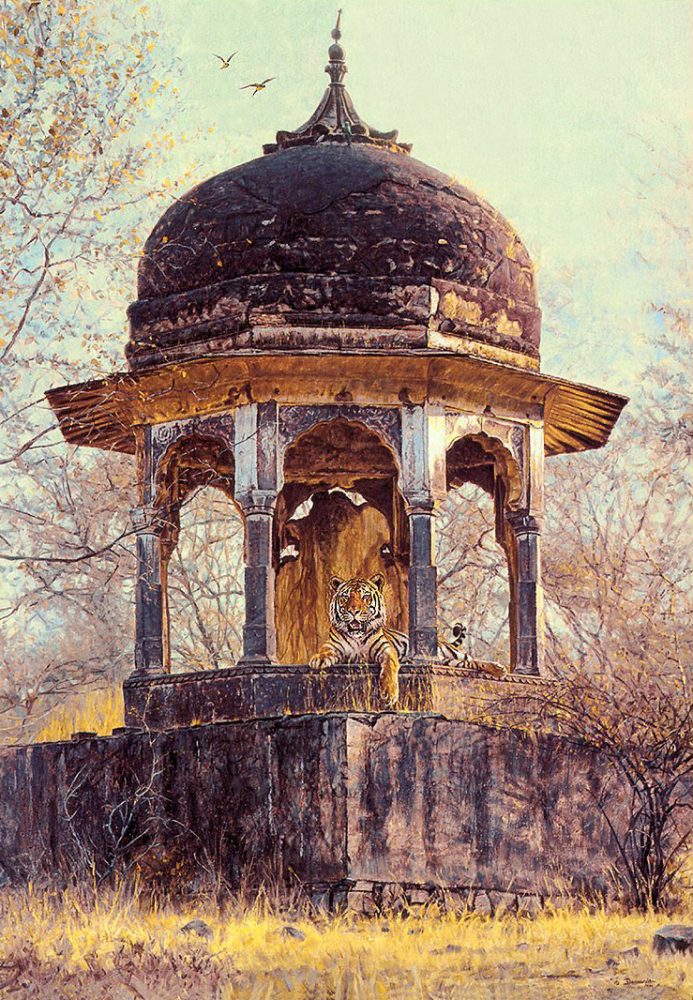Description
38″ x 27″ – Giclee Canvas – 150 Edition
“We all need a sanctuary.
Sometimes, a specific idea for a painting precedes the research. While in India, I hoped to find an ancient architectural element in the tiger’s domain. Tigers live in an area inhabited by humans for thousands of years – many of these places have long since been abandoned. It does not take long for nature to reclaim them. I found this shrine 2,500 feet below Fort Ranthambore temple. Hindus must have used it for prayer and solace from the sun during the long trek up the mountain. Tiger scat and prints surrounded it. At one time or another, a tiger had claimed this temple as its own.
With 1.1 billion Indians struggling to feed themselves every day, it’s a wonder pockets of wilderness remain. The Bengal tiger survives only on small islands of habitat in a sea of humanity. Tiger corridors linking these isolated areas might allow the cats to exchange their genetic diversity and ensure strong populations in the future. But even if we find a way to create these corridors, we must find a way to curb the unyielding demand for wild tiger parts in traditional Chinese medicine. It’s estimated that over half of China’s 1.3 billion people use tiger parts, rhino horn, bear gall bladder and a plethora of other animal pieces. As China’s economy grows and personal income rises, the demand for pseudo-medicines rises as well. With only a small number of tigers still roaming within China’s borders, poachers are forced to look elsewhere. The international trade in illegal wildlife parts is estimated at six billion dollars a year. It is unsustainable.” – John Banovich
“Home to around three quarters of the world’s wild tigers, India is perhaps the last remaining hope to insure their survival. The losses of habitat and illegal poaching have had a devastating impact on their numbers over recent years. This ancient shrine, which was once used by Hindus perhaps for prayer and seeking solace from the sun, a large male tiger has now claimed for his own. In an effort to save one of the rarest cats in the world, India’s Project Tiger has been met with good success. For the lucky observer to see one of these magnificent creatures in the wild, one begins to realize why the royal Bengal tiger is truly the “Jewel of India.” – John Banovich


